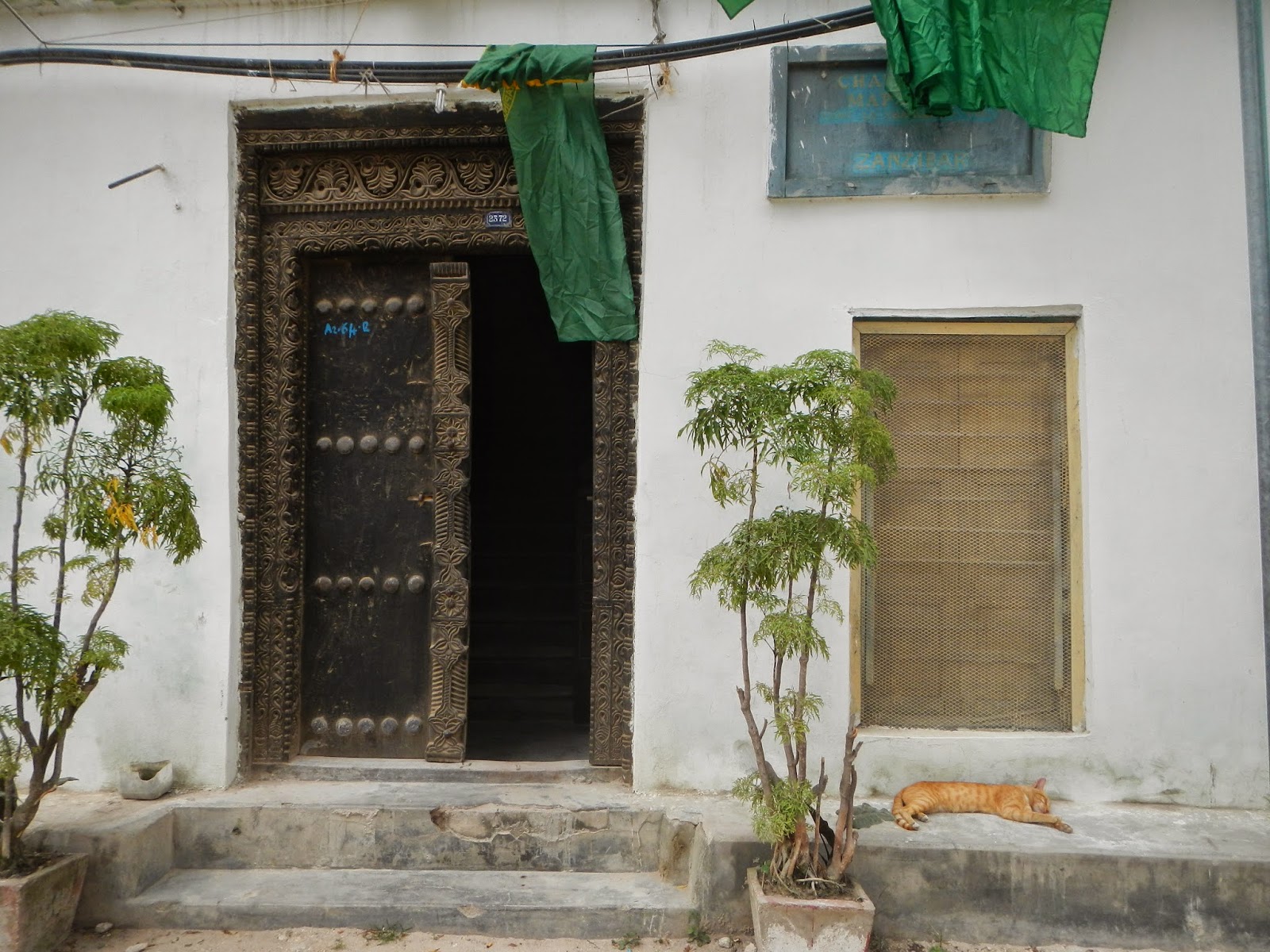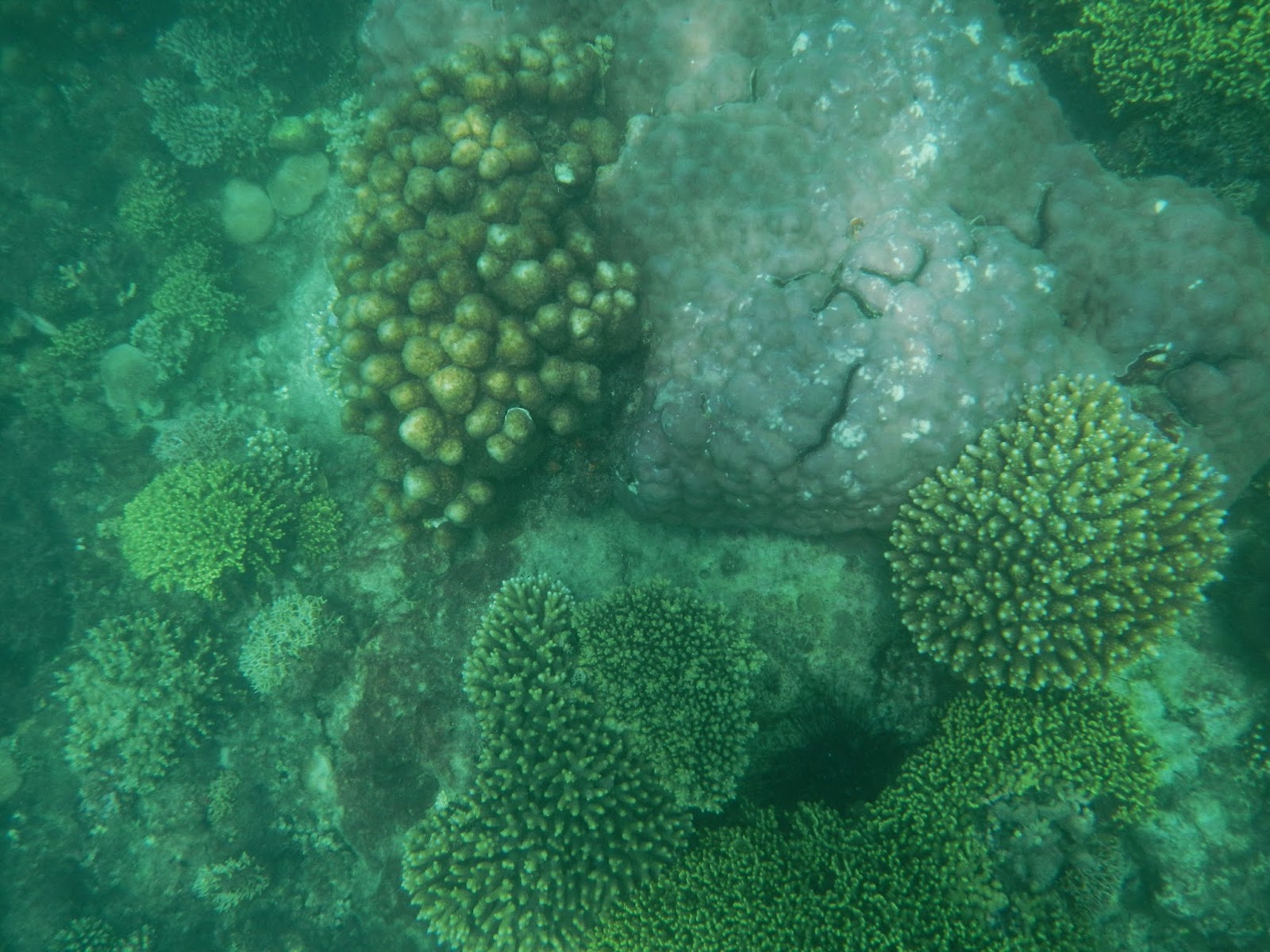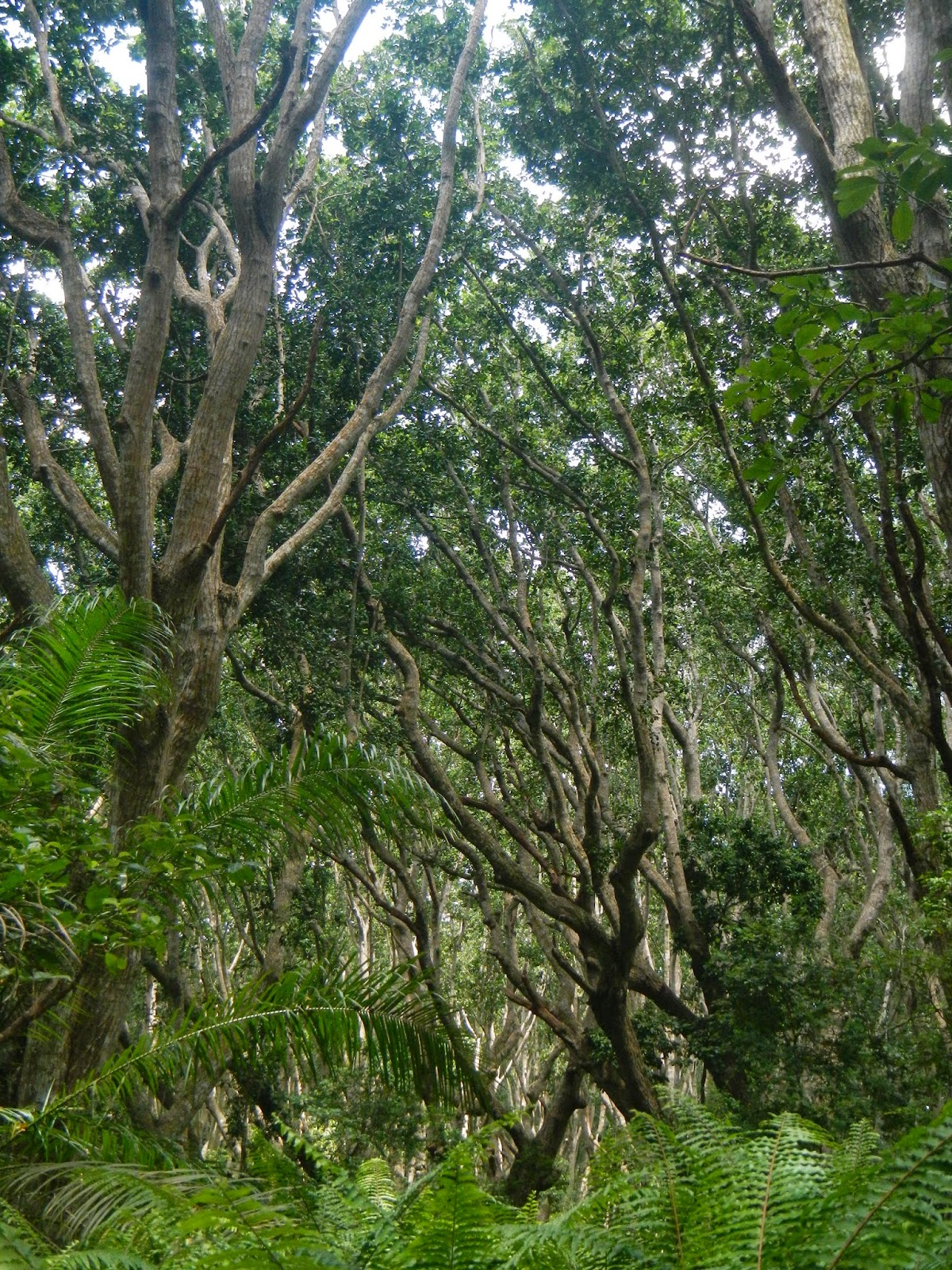Good Times on Zanzibar
Ive just returned from Zanzibar and I went a little overboard posting pictures for you, but I just couldnt help myself, there were too many beautiful pictures I needed to share. This was easily my favorite vacation so far, not just because it was beautiful and delicious, but also because of the intense mix of cultures and ease of travel around the island. Kate and I stayed in Zanzibar City/Stone Town (which is a World Heritage Site) for 4 days, then headed east to Jambiani for 3 days, and lastly north to Nungwi for 4 days.
So before I delve into my adventures too much, heres a map of Zanzibar (which is an island 50 km off the east coast of Tanzania in the Indian Ocean).

So Zanzibar has a really interesting history, and is actually 2 islands - not one. The main island (shown above) is called Unguja (and informally refered to as Zanzibar) and the second island, Pemba, is slightly north of Unguja. While people have been living on the island for about 20,000 years its speculated Persian, Arab, and Indian traders start using the island as a port around 600 CE but documented travels and trade begin in the 14th and 15th century. The original culture of the island is Bantu-Swahili origin (most Zambian tribes, like Bemba, are of Bantu origin as well. However, the Bantu people are initially from Western Africa and migrated into central and eastern Africa during the 10-13th century. So the initial cultures and languages of indigenous Central and Eastern Africa went essentially extinct with the Bantu invasion from the West, and the languages now present are a mixture of Bantu roots, tribal splittings, and external cultural influences - such as Arabic).
In 1503 Zanzibar became part of the Portuguese Empire, but little ruling or thought was given to the small archipelago. The older settlements prior to the arrival of the Portuguese are quite distinct from the later lordship of Oman and Maskat. When the Portuguese arrived in 1498 they found on the coast a series of independent towns, peopled by Arabs, but not united to Arabia by any political tie. Their relations with these Arabs were mostly hostile, but during the 16th century they firmly established their power, and ruled with the aid of tributary Arab sultans. This system lasted till 1631, when the Sultan of Mombasa massacred the European inhabitants. From 1698-1890 Zanzibar was ruled by sultans who expanded Zanzibars trade from ivory and spices (cloves, nutmeg, vanilla, coffee, cardamon, and cinnamon) to slaves fro the Middle East. In the mid 19th century as many as 50,000 slaves passed through Zanzibars ports annually.
This is our hotel in Stone Town, St Monicas, which is refurbished building from the old slave market, the Arabic style of architecture is very prominent throughout most of stone town.
Zanzibar is famous for its doors, over 200 in Stone Town are dated back to the 15th century. If you look closely to the one pictured above you may see a chain-like design along the rim and border. This chain pattern means that Arab slave traders live and work here.
In 1890 Zanzibar became a protectorate (not a colony) of Britian and the slave trade was stopped. In 1963 the island gained its independence and in April 1964 the republic merged with mainland Tanganyika. The United Republic of Tanganyika and Zanzibar was soon renamed the United Republic of Tanzania, of which Zanzibar remains a semi autonomous region, with its own president, government system, and house of representatives.
One of the many mosques, they are so beautiful
Stone Town consists of narrow winding alleys, and no apparent pattern in city planning, but it was always a beautiful experience to wander around and admire.
Our delicious food! Squid curry and coconut cream sauce, spinach in coconut cream and lime, and veggie masala. If only I could eat like this on a daily.
Mmmm! Street food! Grilled spiced prawns
You can see this weird mixture of European architecture appearing between all the Arabic and Indian arches, but its so charming
Sunset on the on the waterfront part in Stone Town
A Hindi Temple. Although 95% of Zanzibar is Muslim there is a small Hindi population
So now that you understand a bit more about Zanzibar, heres what we actually DID in paradise. Besides, obviously, eating well (because lets me honest, thats a priority for Kate and I) we were quite active and saw the island from coast to coast. We explored the fish markets, went to a spice plantation, saw the old slave markets, explored some coral caves and old slave chambers, visited the sultans palace, strolled through the old military forts, walked by Freddy Mercurys birthplace (thats right, the voice of Bohemian Rhapsody was born in Stone Town), explored and got lost in a beautiful city, took a boat out to Prison Island and saw some giant 200 year old tortoises. And this is just in Stone Town. We were busy busy busy. And so happy.
Finally! A beach, after our spice tour we got to relax here for 2 hours. Ive never seen such pristine sand and blue blue BLUE waters.
caves on a beach
So I pride myself in cooking and having a pretty good knowledge of how to use a variety of spices. However, I must say after our spice tour I found myself being a little ignorant on what a lot of my favorite ingredients actually look like. Any guesses on whats pictured above? (Its nutmeg, who knew!)
This is where we went snorkeling off Prison Island - which was actually never used as a prison instead it was converted into a hospital to quarantine sick sea faring travelers between Africa and the Middle East. However, the name of "Prison" Island stuck. Now its being converted into a fancy island resort. Typical.
SNORKELING! Ah so fun! So beautiful! But so mismanaged, the fish nerd in me crying a bit.
On our way to Jambiani on the East coast, we stopped at the Jozani Forest, which is home to the endemic red colombus monkey, one of Africas rarest primates with only about 1,500 left on Zanzibar. Colombus monkeys are unique in the fact that they only have 4 fingers (no thumb) on their front hands. But the forest is really well maintained and so beautiful. It was worth the afternoon hike. The forest lies in a shallow trough in the fossil coral bed between the mangrove filled bays of Chwaka and Uzi. Part of the walk is through a terrestrial old growth forest, mostly of mahogany (one of which is aged between 200-300 years!) and fig, and then is slowly transitions into a mangrove swamp, mostly of white and red mangroves similar to what you would find in Florida.
I kept thinking pterodactyls would fly out of here
We found the monkeys!
On our way out of the forest we got a hitch with a very nice lady, Jo, who moved to Zanzibar from the UK and teaches yoga on the island. So we booked a beach side yoga class with her for the afternoon in thanks for getting a free ride. It was so relaxing to get a slow good work out and mental cleanse after a day of hiking through the humid mangroves. Afterwards we went to Jambiani beach (below) and spent 2 nights and 3 days enjoying the beach. We rented out a traditional dho boat to take us out to the reef (for more snorkeling) and we learned how to cook some traditional Zanzabarian meals which I am definitely making again (chicken masala cooked with green bananas and pilou rice? yes please!)
high tides coming in
A brittle star
Ive NEVER seen high and low tides so extreme. This is low tide - and Ive already walked out 100 meters to get to this boat. And the ocean is still way out there.
on the dho, setting sail. what a beautiful ocean
angel fish, butterfly fish, dories, tangs, and many more I cant ID - sadly these were the majority of the fish that we saw on this particular reef. A good healthy reef system is easy to spot - there are usually lots of top predators (sharks, rays, grouper, snapper, ect) and there were none here.
love my underwater camera
giant clam!
And here is the reef damage. The education about sustaining a reef system is so poor. As we were stopping the boat they just drop anchor on the reef and I literally gasped and stared horrified. So much potential to have such a beautiful ecosystem, but sadly this is what is usually the result, especially in unprotected areas like this one.
Turns out our boat driver went out fishing while we were paying him to take us out to the reef so we could snorkel with these fish. The trigger fish (the black ones) are pretty important to keeping a reef healthy and I tried explaining that maybe if he caught different fish (because yes I understand they need to eat too) that there would be more reefs and more fish for him to catch later. This particular man either didnt understand or didnt care, most likely a combination, and his defense was "but I dont eat these I just sell"
view from our front porch. pure bliss.
After Jambiani we headed up to Nungwi beach on the Northern most tip. This was our most touristy spot of the trip, but it was kind of relaxing to be a stereotypical tourist for 3 days, and eat super touristy food, and pay (very low) mzungu prices. Here our highlight was going scuba diving off Mnemba Island, about 2 km away and is surrounded by an oval reef seven by four kilometres in extent. These reefs have been declared a Marine Conservation area. The marine reserve comprises four distinct habitats which are home to a diverse array of Indian Ocean wildlife, such as: a nesting place of threatened green turtles (monitoring and protection project has been underway since 1996), Humpback whales (July to September), 3 species of dolphin, whale sharks (the world's largest fish), a roost site for migratory and resident shore birds, and approximately 600 species of coral reef fish. Unfortunately for us, we were not actually allowed to go on the island (its privately owned and absurdly expensive) just to lay on the beach and get a sun burn is $200/day/person and to spend a night is between $1500-2000/person/night. Not exactly in our PC budget but we felt pretty classy being allowed in their fancy waters.
The amount of fish here was over whelming! The contrast between this reef and others was undeniable
I found Nemo :)
I was pretty excited to see what a protected system looked like in comparison to Jambiani - and the difference was amazing! As we were coming up from our dive a pod of dolphins swam by (with babies!) and it was a magical experience to be in the water with them. Unfortunately, I couldnt take my camera diving, its limit is 10 meters and we were at 12, but it was beyond beautiful. 12 meter shelves of coral of so many varieties and colors (i recommend google imaging this) but this fish I could ID were: moray eels, mantis shrimps, tuna, box fish, unicorn fish, white snapper, big eye yellow snapper, several types of parrot fish, a lion fish, butterfly fish, angel fish, checkered wrasse, picasso trigger fish (and other trigger fish), frog fish, stone fish, needle fish, multiple sea cucmbers, and sunset wrasse (shown above).
a dusky sunset on the beach
So on a whim, Kate and I decided to pop into this sea turtle sanctuary. I was a little skeptical (a lot of "sanctuaries" in Africa can do more harm than good) but its actually really well managed, by locals, who work with fishermen and take hurt or injured turtles, tag and rehabilitate them, and set them out again. They also take the eggs of the sea turtles that nest of the island, hatch them in their sanctuary, and release the babies after 2 - 3 years. Baby sea turtles usually have a very low survival rate in the wild (about 1/1,000), but once they reach 2 years theyre pretty hardy and will live as old as 100. So protecting the babies gives them a bit of a jump start for the wild. It should be noted that sea turtles are a protected species and most are considered highly endangered including these two species, green turtles and hawksbill turtles.
They are SO adorable
We ended our trip in Zanzibar with a fancy dinner (tuna avocado ceviche, spinach and goat cheese ravioli with crab meat, and prawns with mango) and a bottle of chianti on the beach. We were sad to leave but too broke to stay, but it was a blast and then some. In between all of our active adventures we met some great new friends, lounged and relaxed, danced all night long once or twice, learned some kiswahili (which Ill continue to learn), and met some Masai warriors from Northern Tanzania.
Now Im back in Zambia and time to work hard and push out my last 3 months in country. Thanks to all those who are keeping up with me and following this whirlwind, see you soon.














































Comments
Post a Comment